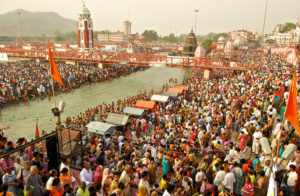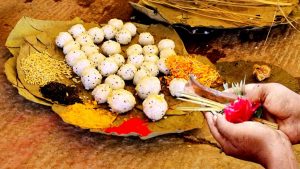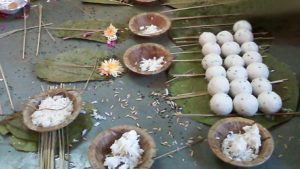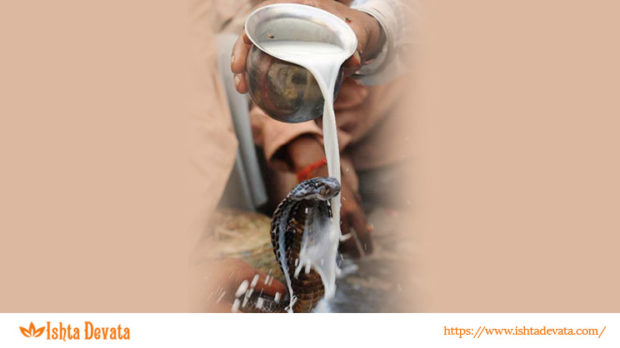Nag Panchami Celebrations in various states of India
Nag Panchami Celebrations in various states of India
Nag Panchami is a widely celebrated festival, especially in the central and southern states of India.
Mumbai
The village of Baltis Shirale, which is situated approximately 400 kilometers (approximately 250 miles) from Mumbai organises an extravagant festive celebrations every year on the occasion of Nag Panchami. Apparently, the village also boasts of the largest collection of venomous snakes in the world. The festive celebrations invites visitors from several countries of the world, who gather here to worship live snakes. Worshippers dig live venomous snakes from their poth holes and place them inside covered earthen pots for a week before the festival. They also feed the snakes with milk daily. On the day of Nag Panchami, these snakes and taken out of the pot and are worshiped. One intriguing fact remains that despite no venom being removed from the snakes, there has not been a single case of snake bite during this annual event.
Few other places where this venerated festival is celebrated include:
- Adiesha Temple in Andhra Pradesh
- Nagaraja Temple in Kerala
- Nagathamman Temple in Chennai
- Hardevja Temple in Jaipur.
West Bengal, Orissa and Assam
People from West Bengal, Orissa and Assam seek the blessings of Mansa, the queen of serpents on the occasion of Nag Panchami. They also seek the protection of the queen, from any impending dangers posed by her serpent clan. Snake-charmers are also requisitioned to invoke the Snake Queen by playing lilting and melodious tunes on their flutes.
Punjab
Nag-Panchami is popularly known as “Guga-Navami” in Punjab. A huge snake’s shape is mould from the dough, that was made from the flour and butter received from many household. The snake mould is then placed on a basket and taken round the village in colourful procession. Women and children sing and dance all along the procession. As the procession reaches the worship area, religious rites and rituals are conducted to appease the snake gods and to invoke their blessings. The dough snake is finally buried with all respect.
Maharastra
Hindu women in the state of Maharashtra start the Nag Panchami day by taking a holy dip early in the morning. They wear their traditional nav-vari” (nine yards-sarees) and adorn themselves with ornaments, following which they perform pooja for the Nagas. Roadside snake charmers are usually seen having a basket on their heads containing dangerous snakes that are their pets. They commute from one place to another, playing melodious notes with their flutes, calling out to women from the streets to serve milk to the snakes. On hearing the call, women come out of their houses to perform pooja for the snakes. They also sprinkle haldi-kumkum and flowers on the snakes’ head, following which they offer sweetened milk as offering. They also worship the snake as god and make donations to the snake charmer in the form of money and clothes. Milk bowls are also placed by few people at places where the snakes frequent.
Some women also make an image of a five-headed cobras on wooden plank and offer prayers to the snake god. It is a tradition in few households where the daughters wash their father’s eyes with rose flowers dipped in milk and in turn receive gifts from them.
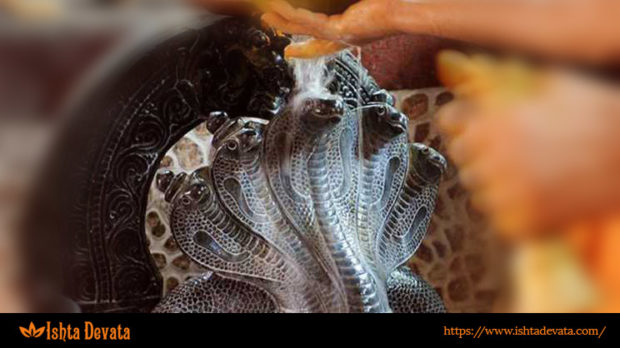
The Nag Panchami festival assumes greater significance in the village of Baltise Shirale in Maharashtra, as mentioned earlier. On this holy day, people ceremoniously carry earthen pots containing the snakes on their heads. They go on a long procession to the sacred-temple of goddess Amba. After offering prayers to the goddess, they open their pots and take the snakes out. The snakes are then let out freely in the temple courtyard. All the cobras are then made to raise its head by swinging a white-painted bowl, filled with pebbles in front. The Pandit sprinkles haldi-kumkum and flowers on their raised heads. The snakes are offered with milk and honey, once the pooja gets over.
Upon completing all the prayer rituals, the snakes are put back in their pots and carried in bullock-carts from the temple through the 32 village hamlets of Shirale. Women eagerly wait in front of their houses for getting the divine “darshan” of the cobras. A couple of cobras are let loose in front of each house in the village, where men and women offer prayers to the snakes by sprinkle puffed rice, flowers and coins. They also perform “aarti” to the snakes seeking their blessings. People also believe that worshipping the snakes would bring good news to all those bachelorettes who are awaiting wedding. The amazing part of this ceremony is that till today, these snakes are not known to harm the people here, despite no prior extraction of venom from their fangs. The Director of the Madras Snake Park had thoroughly examined these cobras and had confirmed that neither the fangs nor the poison had been prior extracted. This happening is something extraordinary and totally beyond logical explanations.
A grand fair is organised on the evening of the Nag Panchami every year near Goddess Amba’s temple. Pots containing the cobras are placed over a platform. Upon removing the pot lids, the cobras lift their heads in unison. This is truly an unusual phenomena which leaves the onlookers simply amazed. Thousands of devotees throng the temple here from places like Kolhapur, Sanghli, Pune on this auspicious occasion. Foreigners too are anxious to witnesses this spectacular ceremony and hence visit Shirale in large numbers. Once the Nag Panchami rituals get over, these snakes are released into the wild the following morning.
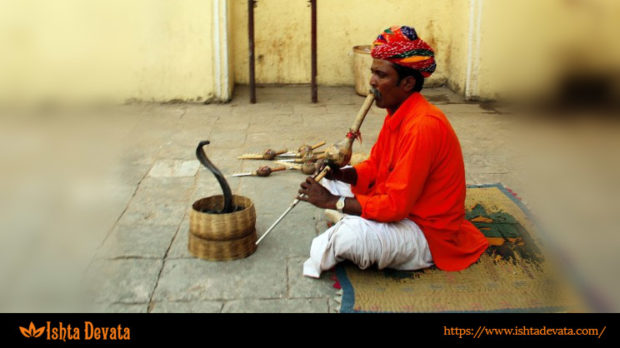
One popular legend informs us of the origin of the festive ritual at Baltis Shirale. Long ago, when Guru Gorakhnath was passing through his village one day, saw a woman offering worship to a clay-cobra idol. On seeing this, the saint is said to have transformed the clay snake into a living one. He also insisted the lady not to be afraid of snakes. Since then, the village of Baltis Shirale and other nearby areas began practising the worship of snakes. A temple was also later built for Guru Gorakhnath on a nearby hillock, as a mark of respect for the great Guru.
The festival of Nag Panchami is even more popular among the tribal population in the interior parts of Maharashtra, who perform acrobatics on the streets with snakes, as a means of earning money.
Several temples in India are dedicated to Snake Gods where live snakes, especially the Cobras are worshiped on the occasion of Nag-Panchami day.
-Radhika T V
Reach us to be a part of our whatsapp spiritual reminder group
